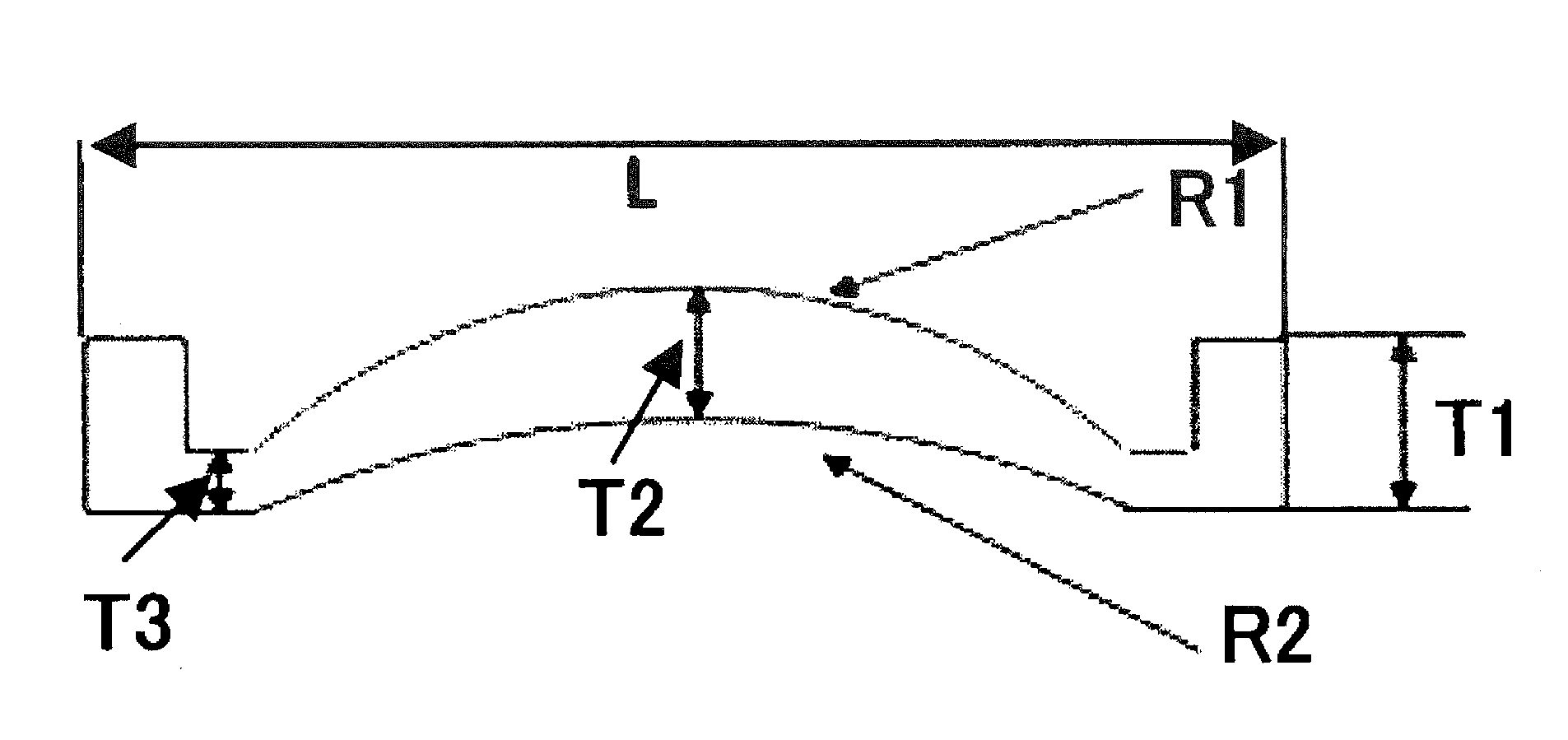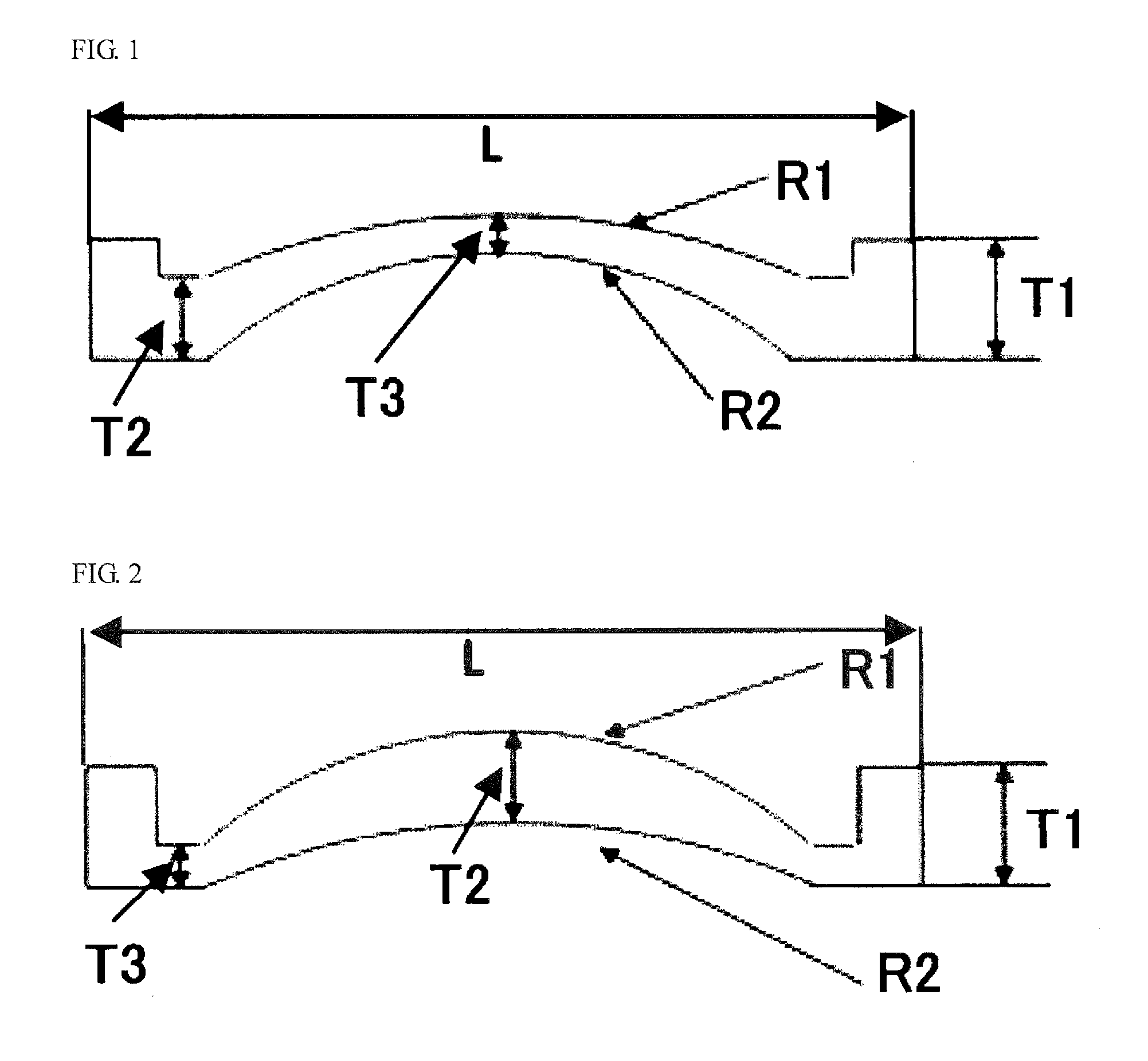Optical polymer and optical element obtained by forming thereof
a technology of optical polymer and optical element, applied in the field of optical polymer, can solve the problems of difficult to increase the optically effective area, non-uniform birefringence, wax may bleed out from the surface, etc., and achieves the effects of small diameter, small diameter, and large optically effective area
- Summary
- Abstract
- Description
- Claims
- Application Information
AI Technical Summary
Benefits of technology
Problems solved by technology
Method used
Image
Examples
example 1
[0106]A polymerization reactor which had been dried and in which the internal atmosphere had been replaced by nitrogen, was charged with 7 parts (1% based on the total amount of the monomers used for polymerization) of a monomer mixture including 70 wt % of methanotetrahydrofluorene (hereinafter abbreviated as “MTF”), 22 wt % of tetracyclododecene (hereinafter abbreviated as “TCD”), and 8 wt % of norbornene (hereinafter abbreviated as “NB”), 1600 parts of dehydrated cyclohexane, 0.6 parts of 1-hexene, 1.3 parts of diisopropyl ether, 0.33 parts of isobutyl alcohol, 0.84 parts of triisobutylaluminum, and 30 parts of a 0.66% cyclohexane solution of tungsten hexachloride. The mixture was stirred at 55° C. for 10 minutes.
[0107]693 parts of the monomer mixture and 72 parts of a 0.77% cyclohexane solution of tungsten hexachloride were continuously added dropwise to the polymerization reactor over 150 minutes with stirring while maintaining the reaction system at 55° C. After completion of ...
example 2
[0115]A norbornene-based polymer was obtained in the same manner as in Example 1, except that a monomer mixture including 65 wt % of MTF, 30 wt % of TCD, and 5 wt % of NB was used as the monomer mixture, and the amount of 1-hexene was changed to 0.55 parts.
[0116]The conversion ratio of the monomers into a polymer was 99.9%. The resulting norbornene-based polymer had a weight average molecular weight (Mw) of 25,000, a molecular weight distribution (Mw / Mn) of 1.72, a hydrogenation ratio of 99.9%, and a glass transition temperature (Tg) of 145° C.
[0117]A thin lens was formed using the resulting pellets. The evaluation results are shown in Table 1.
example 3
[0118]A norbornene-based polymer was obtained in the same manner as in Example 2, except that the amount of 1-hexene was changed to 0.45 parts.
[0119]The conversion ratio of the monomers into a polymer was 99.9%. The resulting norbornene-based polymer had a weight average molecular weight (Mw) of 29,000, a molecular weight distribution (Mw / Mn) of 1.88, a hydrogenation ratio of 99.9%, and a glass transition temperature (Tg) of 145° C.
[0120]A thin lens was formed using the resulting pellets. The evaluation results are shown in Table 1.
PUM
 Login to View More
Login to View More Abstract
Description
Claims
Application Information
 Login to View More
Login to View More - R&D
- Intellectual Property
- Life Sciences
- Materials
- Tech Scout
- Unparalleled Data Quality
- Higher Quality Content
- 60% Fewer Hallucinations
Browse by: Latest US Patents, China's latest patents, Technical Efficacy Thesaurus, Application Domain, Technology Topic, Popular Technical Reports.
© 2025 PatSnap. All rights reserved.Legal|Privacy policy|Modern Slavery Act Transparency Statement|Sitemap|About US| Contact US: help@patsnap.com



